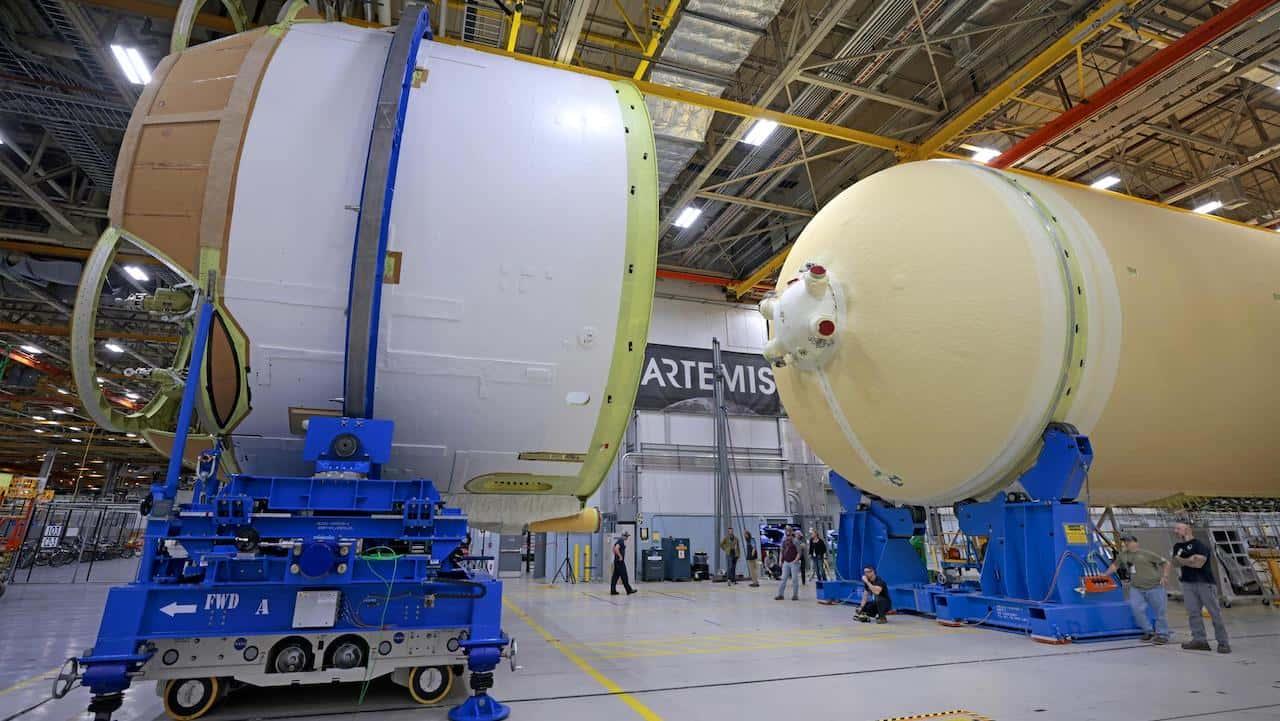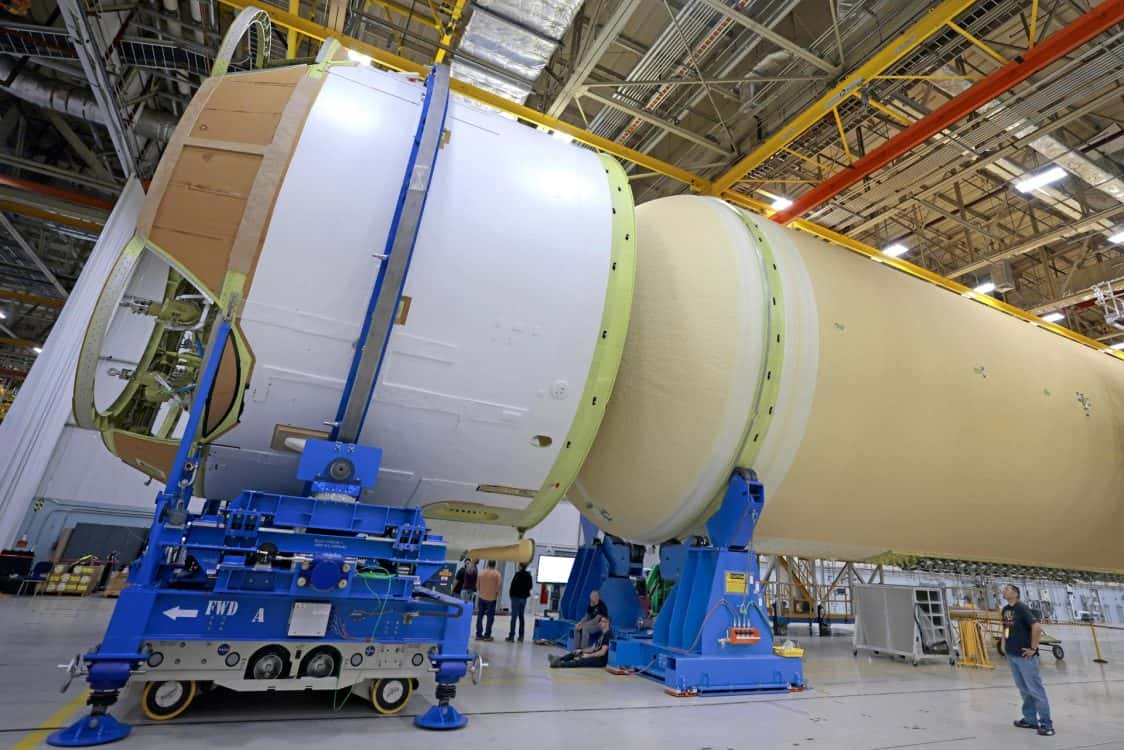This development was announced by agency officials on Monday, September 25, marking a crucial step in the preparations for the first crewed Artemis 2 moon mission in five decades.

In a significant milestone for NASA’s Artemis 2 moon mission, the core stage of the Space Launch System (SLS) rocket has now received all four of its engines
Artemis 2, scheduled for late 2024, will carry four astronauts and their Orion spacecraft on an ambitious journey around the moon. This momentous Artemis 2 moon mission involves the use of four RS-25 engines, with two of them being repurposed from NASA’s historic space shuttle program, including one from a mission to the Hubble Space Telescope, while the other two incorporate recycled hardware.
The installation of these engines took place between September 11 and September 20 at NASA’s Michoud Assembly Facility in New Orleans. The next phase involves securely attaching the engines to the stage and integrating the propulsion and electrical systems within the structure.
Once assembled, the SLS rocket will undergo testing at the launch pad in NASA’s Kennedy Space Center in Florida next year, transported there by barge. The preparations are already in full swing at Launch Pad 39B, where seven key Artemis 2 readiness tests, including a simulated launch day with the full crew, were recently completed on September 20.
The Artemis 2 crew comprises NASA commander Reid Wiseman, NASA pilot Victor Glover, the first person of color to leave Earth orbit, NASA Artemis 2 moon mission specialist Christina Koch, the first woman to do so, and Canadian Space Agency mission specialist Jeremy Hansen
The success of this Artemis 2 moon mission is a crucial factor in determining the timeline for Artemis 3, which aims to land astronauts on the moon in 2025 or 2026, contingent on various factors, including the performance of SpaceX‘s Starship system for lunar landing and surface spacesuits provided by Houston-based Axiom Space.
Unlike the previous Apollo program, the Artemis program features international collaboration, with more than two dozen Artemis Accords partners contributing key hardware in exchange for scientific opportunities or mission participation. This program serves as a framework for international peaceful space cooperation led by NASA, promoting global collaboration in space exploration.




